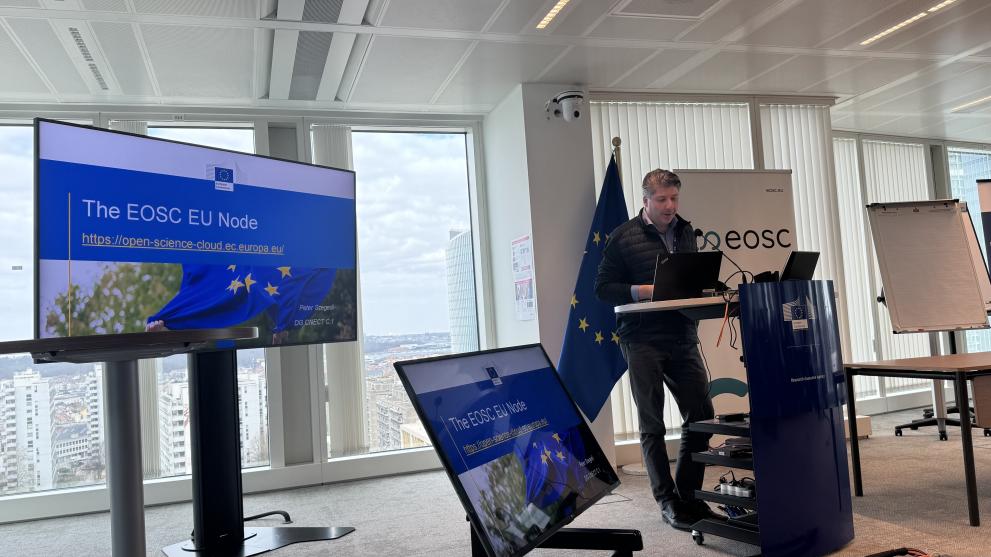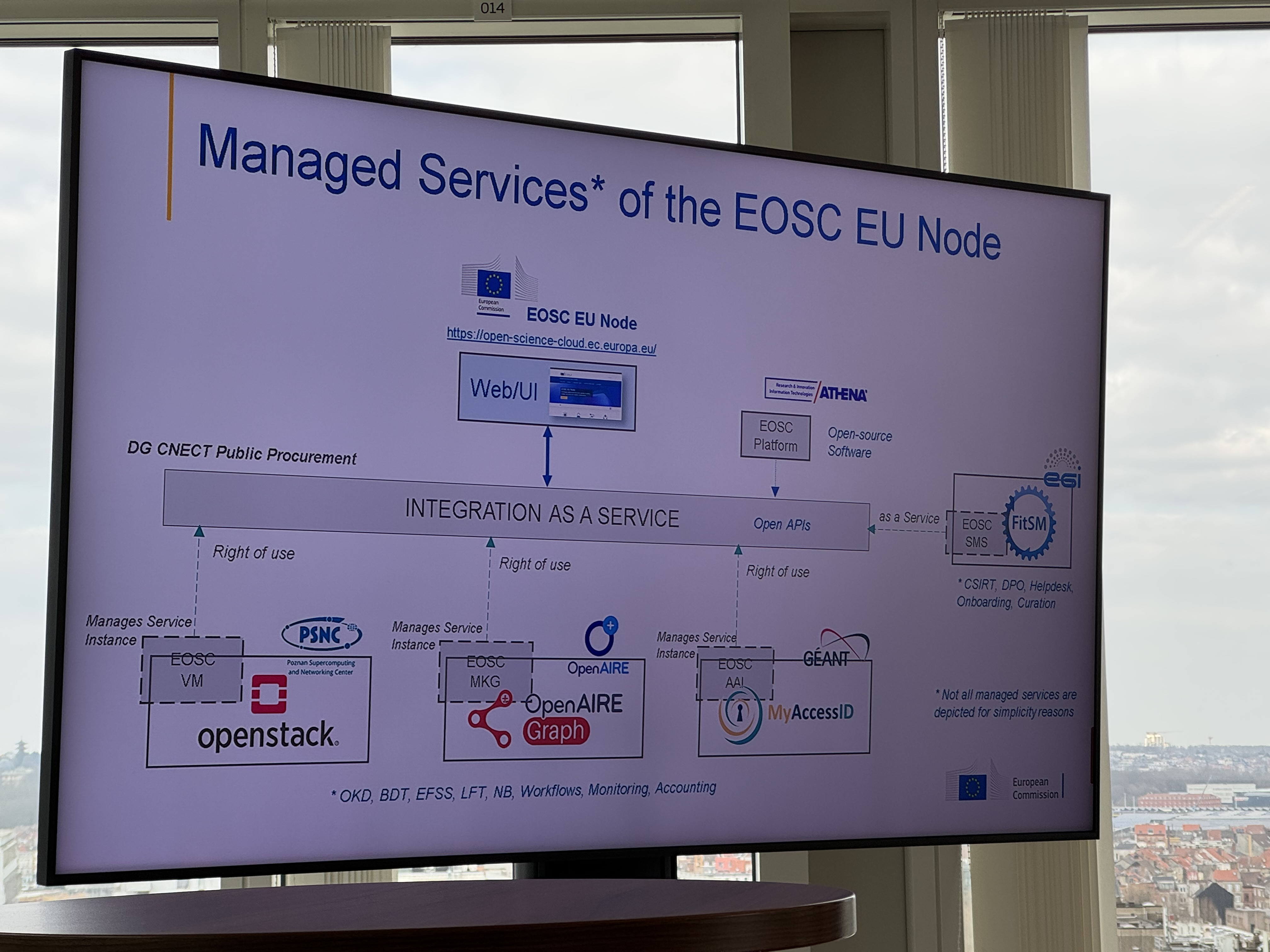
The EOSC Federation is no longer just an idea, it's becoming a working reality. Last week’s Kick-off EOSC Node Federation Workshop brought together national and thematic EOSC Node candidates, technical experts, and the EOSC EU Node team to focus on one shared goal: building EOSC together.
Why It Matters
EOSC is founded on a bold vision: to create a federated and interoperable ecosystem where researchers can access services, data, and tools across borders and disciplines. That vision only becomes reality if the nodes, diverse in scope, maturity, and mission, align around shared capabilities, policies, and practices. That alignment is now in motion.
A Federation of Many: Embracing the Plurality of EOSC Nodes
The EOSC Federation is taking shape through a constellation of nodes (in national, thematic or other scope), each defined by their institutional landscape, user communities, and service capabilities. Some, like CSC (Finland), SURF (Netherlands), and EUDAT, build on long-standing infrastructure expertise. Others, like BBMRI-ERIC or the Life Science Research Node, contribute rich, domain-specific resources and workflows. Finally, thematic initiatives like Blue-Cloud, PaNOSC, and Data-Terra, further enrich the ecosystem with cross-disciplinary services for marine, photon/neutron, and Earth sciences.
Despite differences in scope and maturity, all nodes share a common trajectory: aligning with EOSC's principles of openness, interoperability, and co-creation. And in this journey, the EOSC EU Node is not “just another node”, but a scaffolding designed to support, enable, and connect.
The EOSC EU Node is the first operational implementation of an EOSC Node, now live with over 2,000 active users, 36,000 credits used, 140M+ research objects indexed, and 99.5% uptime. More than a model, it offers concrete capabilities for other nodes to reuse, adopt, and integrate.
At its core, the EOSC EU Node provides federated authentication, resource catalogues, service management, monitoring, and a virtual credit system, alongside infrastructure services like VMs, containers, bulk data transfer, interactive notebooks, and file sync & share.
With an open contributor model, it enables flexible participation, whether discoverable, onboarded, or fully integrated. Node candidates can test interoperability, onboard services, federate catalogues, and build their capabilities within a modular, standards-based architecture that is both operational and adaptable.

Breakout Highlights: Advancing Practical Collaboration
Workshop participants engaged in three dynamic breakout sessions, each tackling a critical aspect of the Federation.
- Breakout 1: Federating Capabilities
Focus: Identity management and catalogues
With an updated EOSC AAI Architecture, expected by the end of March, discussions explored how the common AAI framework will simplify cross-node authentication and policy enforcement.
Attention also turned to integrating research product and service catalogues into the EOSC Knowledge Graph. Node representatives raised insightful questions about metadata standardisation, automation, and onboarding, reaffirming that interoperability is as much about coordination as it is about code.
- Breakout 2: Federating Resources
Focus: Enable cross-node workflows with shared policies
The session took a pragmatic view: begin with the basics, enabling nodes to interoperate, and gradually tackle the more complex challenge of harmonised access policies.
As discussions unfolded, the EOSC EU Node emerged as a useful reference point. By sharing access policies, APIs, and lessons learned, it offers others a foundation to build on, supporting testing, integration, and early cross-node workflows.
- Breakout 3: Federating Science
Focus: Scientific workflows and real-world use cases
This session brought to light 46 use cases from candidate nodes, ranging from early concepts to established workflows. Recognising the need for focus, the group agreed to prioritise a subset of mature workflows that could be deployed within the Federation by late 2025, ahead of the EOSC Symposium in November.
The Takeaway
The workshop brought more clarity to what federation means in practice, and with it, a stronger sense of direction, even if there’s still a way to go.
For many participants, it marked a shift from abstract concepts to practical connections, between services and policies, technical needs and community goals, and across the growing network of EOSC Nodes.
Seeing the EOSC EU Node in operation helped ground the vision. It showed what’s already possible, and where coordination, reuse, and simplification can lower barriers for others.
No one expected to get all the answers. But what emerged was a clearer path forward, and a growing confidence that EOSC can be built collaboratively.
The mood? Cautiously optimistic and energised. The Federation is no longer just a goal; it’s a process that’s starting to take hold, visibly, practically, and together.
Details
- Publication date
- 26 March 2025
